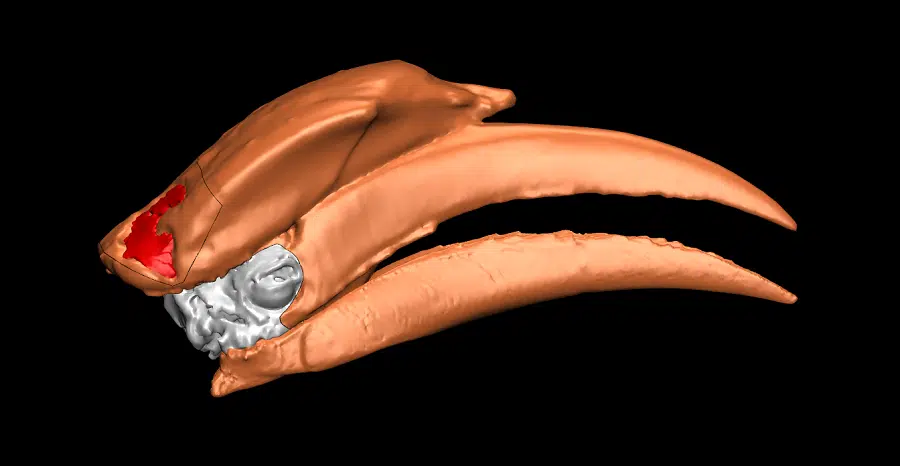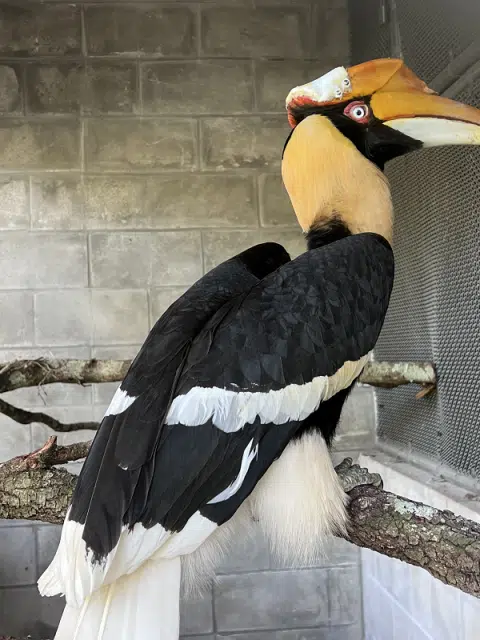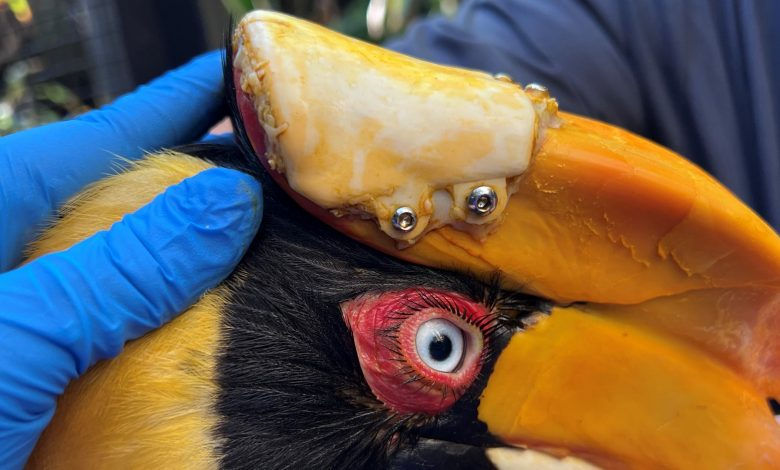Cresent, an Indian hornbill at ZooTampa in Florida, USA, has become the first bird to receive restorative surgery after developing a life-threatening tumor. The tumor was located under Crecent’s casque, without which her sinuses would be left exposed. The surgery saw her casque being replaced using biocompatible 3D printing technology.
According to ZooTampa, Crescent had contracted a form of skin cancer, which is usually deadly in hornbills. After which, medical experts at the University of Florida (USF) used 3D printing technology from Formlabs, both to print a pre-operative surgical guide and a prosthetic casque.

In preparation for the hornbills surgery, the USF radiology team used CT scans to 3D print a surgical guide for the procedure. 3D printed surgical guides enable accurate, personalized modeling of humans, and now birds, anatomy much faster than conventional methods, and are increasingly used in hospitals, and now avian veterinary practices, around the world. Without the pre-surgical planning and 3D printed guides, the surgery would have been “much more challenging,” said surgeon Dr. Alexander Fox-Alvarez, who was assisted by Dr. Kaitlyn McNamara, D.V.M, and UF senior surgical resident.
Manufacturing on Demand

In order to print the prosthetic casque, the team needed a biocompatible material that was lightweight, hard, and durable. When USF Health reached out to Formlabs for advice – Formlabs donated their new, in-development, BioMed White resin material, which fit the criteria.
BioMed White was shown for the first time, along with BioMed Black, at the 2021 Radiological Society of North America conference. At the time, Formlabs said the addition of the resins to its materials library would allow for greater flexibility in design and function and could be used in a variety of applications ranging from medical devices to consumer goods, and apparently, birds.
After removing the tumor, the surgeons adhered the 3D printed casque to the hornbills beak using dental acrylic and titanium screws. Caretakers reported that she is doing well and that there has been no change in her behavior, appetite, or vocalizations since the restorative surgery.
“An unexpected benefit came when Crescent began preening within hours after surgery,” ZooTampa said. “The Formlabs resin happened to be compatible with the yellow preening oils secreted from the glands above her tail, giving the new casque the same bright glow as her original one.”
* This article is reprinted from 3D Printing Media Network. If you are involved in infringement, please contact us to delete it.
Author: Edward Wakefield



Leave A Comment